An American in Iceland: the Benefits of Learning the Language Before a Vacation Posted by janet on Sep 3, 2014 in Archived Posts
Starting in late fall of last year, I found myself planning for a summer trip to Iceland, a place I’d wanted to visit for a very long time. Shortly after the tickets were booked and the dates circled on the calendar, it suddenly hit me that this little island in the middle of the Atlantic was unique for more than just its stunning volcanic landscapes – it was the first time in a long while that I was going somewhere they don’t speak either English or Spanish, the two languages I know well. If I wanted to talk to people, I was going to have to learn something of the Icelandic language.
Of course, travel agents and fellow travelers all assured me that “everyone” in Iceland – or at least, everyone who has anything to do with tourists – speaks English, often quite fluently. No language learning would be necessary, they said. Needed or not, though, I knew I wanted to try. I work for Transparent Language, a language company, in part because I love languages, and this was a golden opportunity to experiment with a new one.
And what a language Icelandic is! My first impression was just how different it is – three grammatical genders, noun cases, unfamiliar sounds, a couple new letters, words that seem to stretch across half the page (like “hádegismaturinn”, a mouthful of a word that just means “lunch”)… It’s not at all like Spanish or the other Romance languages I have the most contact with at work, or the Japanese I’ve dabbled with. And while it is a member of the Germanic language family, like English, it has fewer cognates and a lot fewer loanwords than you might expect – Icelanders would rather coin their own terms, like “sjónvarpið” and “leigubíllinn”, than borrow our “TV” and “taxi”.
To me, though, that added to the experience. I wasn’t aiming for fluency – just the ability to be understood in common situations, and maybe have a little fun with things. To that end, I cherry-picked the words and phrases I most wanted to know – it says something about me that “bookstore” (“bókabúðin”) and “ice-cream” (“ísinn”) both made my list before “Where’s the bathroom?” (“Hvar er klósettið?”), though I did eventually learn that along with all the tourist survival classics.
I mostly worked with a variety of Transparent Language programs, relying heavily on the flash-card style learning activities and especially the Refresh feature to help me commit things to memory. Little by little, with regular practice, things came together – by the time my trip rolled around, I had 786 words and phrases in my learned items list, and I was ready to use them.
At last, the big day arrived, and I found myself on Icelandair for the easiest and fastest international flight I’ve ever had. There was a surprising thrill to seeing the word “Útgangur” (“Exit”) on the plane’s emergency door – the first of my known words that I spotted in the wild, so to speak.
They also had little language lessons written on the seat covers – mine was about the word for “Thanks” (“Takk”), my mom’s had words for “air” and “sky” (“loft” and “himinn”), and my son was thrilled that his had the word for “lava” (“hraun”), which became the first new Icelandic word I learned on the trip. My son declared “I like Iceland already!” even before we broke through the clouds and caught our first sight of the famous fields of old lava around the airport.
There’s something magical about the first moments of arriving in a new place—the subtle details, like spotting familiar words in an unfamiliar setting, or the way the landscape unfolds beneath you as the plane descends. The thrill of discovery, even before setting foot on the ground, makes travel such an unforgettable experience. But while commercial flights have their charm, they also come with long security lines, crowded terminals, and rigid schedules that can sometimes take away from the joy of the journey. That’s where private aviation offers an entirely different perspective—one of convenience, comfort, and total flexibility.
Whether you’re flying for a special occasion, a business trip, or a long-awaited getaway, having control over your schedule and flying in a stress-free environment makes all the difference. Companies like www.fractionaljetownership.com make this experience more accessible, offering tailored solutions that provide the benefits of private jet travel without the commitment of full ownership. It’s an option that turns travel into something seamless and luxurious, allowing you to focus on what truly matters—the destination, the people you’re traveling with, and the unforgettable moments along the way.
When you begin your trip with small delights—like learning a few new words mid-flight or seeing your child light up at the sight of lava fields—you realize how the journey itself is part of the story. And that story is even better when it’s unhurried, personal, and comfortable.
Of course, that ease doesn’t have to start in the air. Ground transportation can also set the tone, especially when arriving in a new country or heading out for an early-morning flight. Booking with a local, reliable service like www.GoedkopeTaxi.be can take the edge off those first steps—no scrambling for rides, no last-minute app failures, just a car ready when you are. Whether you’re exploring cobbled cities, racing to a train, or heading to your hotel after a long haul, a seamless taxi experience gives you that same feeling of calm and control that private flight offers. It’s about creating a journey where every leg feels intentional—and every moment, from runway to roadway, is yours to enjoy.
We got in just after 11:00 PM, in time for a spectacular late-night sunset. I didn’t get to use the little Icelandic spiel I’d prepared for customs – the officer checking passports for the late planes that evening was clearly too busy to chat, and stamped everyone’s documents without a word in any language. I did, however, take a deep breath and say “Takk fyrir” (“Thank you”) to the Flybus driver as he unloaded our luggage at the hotel. He muttered a distracted response, then did a double-take and said, “Takk fyrir? Why do you know that?” Not “how”, but “why” – apparently, Icelanders don’t expect much from tourists. He smiled, though, when I said I’d learned a little Icelandic, and wished me a good trip in that language.
That boosted my confidence enough to walk into the hotel and complete my check in, which I actually managed entirely in Icelandic. It helped that hotel check-ins follow a predictable pattern, but still… the reception clerk clearly understood me, and while I didn’t catch every word he said, I followed enough to sign the form when asked, show him my credit card, tell him how many people we had, etc. I’m sure, of course, that the clerk could have handled the whole thing easily in English, but I’m glad he let me have my little triumph – I was extraordinarily proud, and it started the trip on a high note.
In fact, as I quickly learned over the next few days, Icelanders themselves are proud to follow the European tradition of impressive multilingual abilities: An ordinary waitress might take orders in three languages before 8:00 AM, and I met tour guides who could converse extensively in more tongues than that. Most people would somehow instantly spot me as an American (My shoes? My clothes? The English-speaking child at my side?) and automatically address me in English so fluent that it seemed embarrassing to trot out my awkward beginner Icelandic in response. I made efforts, though, and soon discovered that if I could get an Icelandic word in edgewise, I was usually rewarded with a complete switch of languages – if they thought I knew any Icelandic at all, they assumed I was fluent, and wouldn’t hesitate to rattle off long sentences that far outstripped my fledgling comprehension. It was fun to try, though, and people would fall back on English if they realized I was lost.
Most of what I ended up saying were expressions of appreciation – “Takk fyrir” was probably my most used phrase, along with various compliments. I was able to tell a woman who sang for our group that her song was beautiful, and tell a museum guide that her tour was “useful”. (I wish I’d learned the word for “interesting”, but I hadn’t.) Actually, the word “fallegur” (“beautiful”) came in handy for a lot things – Iceland is an amazingly beautiful country, and Icelandic is a beautiful language, as I was able to tell several people. I managed to move beyond memorized phrases for a few very short conversations: commiserating with a hotel clerk about a slow computer, telling a helicopter pilot I work for a language software company, introducing my mother and son to an older man in traditional fisherman’s garb by a restoration of an old boat – the one Icelander we met who seemed not to speak English. (I don’t know if he was serious or just acting his part, but he grinned to hear my greeting in his language.) Oh, and I had a long chat in Spanish with a couple from Barcelona at a restaurant near Lake Mývatn – never assume that any language is useless, no matter where in the world you are.
I passed on a few more Icelandic compliments and comments in writing in the guest books at various tourist sites – a low-pressure way to use a bit of the language, and I like to think someone had fun reading them later. I did a lot of reading myself – I may not be up to serious literature yet (which didn’t stop me from buying an Icelandic copy of The Hobbit – I’m fluent in Tolkien, in any language), but signs, menus, place names on maps… it was fascinating to see what I could pick out. In fact, one of Icelandic’s most characteristic quirks – the tendency to stick words together to make other words – meant that by finding the roots I knew, I could actually read a lot more than I thought. For example, Eyjafjallajökull – that volcano that played so much havoc with air travel and the tongues of news reporters back in 2010 – is literally the “island mountain glacier”… and yes, I can actually pronounce its name now. (“AY-uh-fyat-luh-YO-kut-luh”, if you’re interested.)
I confirmed that pronunciation (and many others) by listening to the guides and native speakers. Not surprisingly, they spoke faster and less predictably than the teaching materials I was used to, but I could catch certain things. Numbers – you’d be surprised how often those come up. Weather words – everyone uses those. Once I heard a local ask the bus driver where to find an ATM. They were all little things, nothing critical, but it still felt like a small victory to hear and understand them.
It’s that sense of “something extra” that learning a little bit of the language really added to my experience. Maybe it wasn’t strictly necessary for this trip, given how friendly Iceland has made itself for foreign tourists, but my efforts were by no means wasted. I thoroughly enjoyed the learning process, the insights I picked up by reading and listening, and the smiles of the people I spoke to. Like being drenched by a geyser, photographing puffins in the Arctic Circle, and visiting the inside of a volcano, the language will be part of my Iceland memories.

Build vocabulary, practice pronunciation, and more with Transparent Language Online. Available anytime, anywhere, on any device.



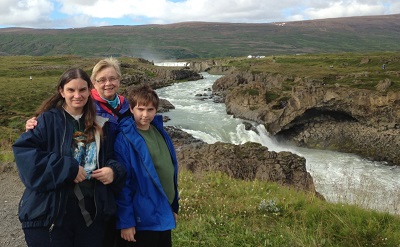
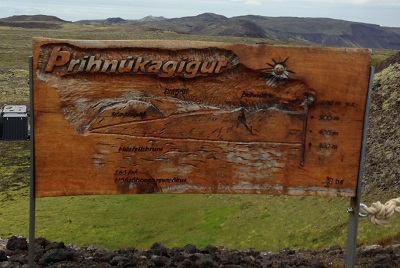
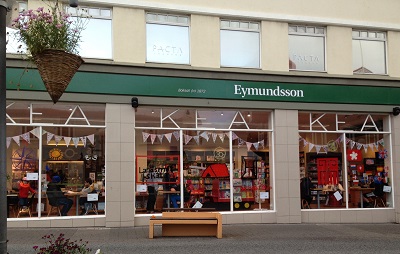
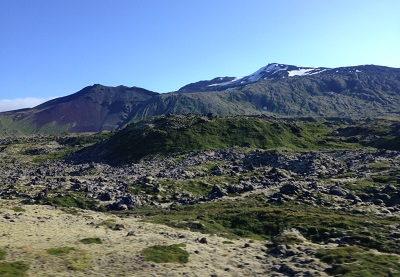

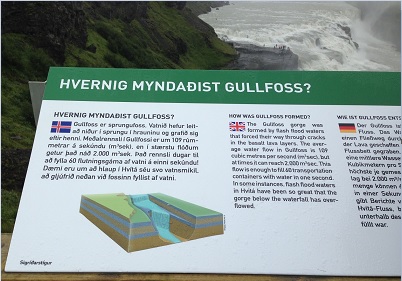
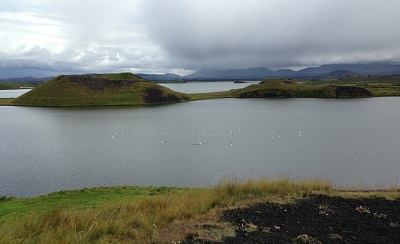


Comments:
Sinead:
Thank you for that wonderful post! I have lived in a foreign country for almost 25 years and travel to countries where I don’t speak the language well (I speak Russian and German well and had five years of Spanish and two of Polish), so I can definitely sympathize with your experience. I’ve been using your Irish language software and just love it. Thanks for telling us your story – and working for such a good company!
janet:
@Sinead You’re welcome, and thanks for sharing yours!
My Russian is limited to the alphabet and the handful of memorized tourist phrases I remember from visiting the then-Soviet Union when I was in high school. My favorite was “хочу мороженое.” – “I want ice-cream.” I could say that in Icelandic, too – I guess my vocabulary priorities haven’t changed!
Irish is a beautiful language to listen to, and I bet it’s a fun language to learn. Good luck with it, and I’m glad you like our programs!
Sheila Morris:
Wow, I’m impressed! We took a trip to Iceland a couple of years ago, and I studied really hard, and got almost nowhere. I assumed that because I speak Swedish, Icelandic would be similar. Not similar enough! I probably should have taken your approach and learned mostly words and phrases, but I tried to wrap my head around the grammar. When I found out there are something like 70 noun declension patterns, I kind of gave up. I should have realized they would accept anything I could manage. I WAS able, once, to tell a farmer his horse was out running up and down the road–“Horse” being one of the first nouns you learn. I guess that will have to do.
janet:
@Sheila Morris I hope your trip was as much fun as ours! Incredible country, isn’t it?
Yes, I took a vocabulary-first approach, which I definitely recommend. As you discovered with the “Horse” incident, you can often say a lot more by knowing one right word than by having a whole declension chart in your head!
Still, I didn’t entirely ignore grammar… I made a point to learn the basics of present-tense verbs and how to recognize genders and plurals, for example. You can pick up a surprising amount of that by paying attention to words and particularly phrases – there’s probably a whole nother blog post in that concept, actually – plus I looked up stuff I really wanted to know. I’ll admit, though, that I didn’t even try to tackle noun cases, unless they were part of a memorized phrase.
The little bit of grammar I did learn helped, and if I go on with Icelandic, either for fun or because I go back for the Northern Lights someday, I’ll definitely do more – but on this trip, it was knowing the words that made the most difference.
Thanks for sharing, and good luck with future travels!
Vishnu Raghavan:
¡Disfruté el artículo muchísimo! Les dije a mis padres y mis amigos que me gustaría aprender el islandés y todos se burlaron de mí. Esta es la razón por la que hice esta investigación para averiguar los beneficios de aprender este idioma bonito. Fui a Reikiavik el año pasado durante una parada desde Copenhague a Seattle (mi ciudad natal) por ocho horas y disfrute la ciudad; de hecho, ¡es una memoria que nunca olvidaría! Además, me interesa en la geología y Islandia tiene volcanes, glaciares, y estalagmitas. Aprender el islandés me ayudaría a entender la geología del país más y mostraría a todos de mis amigos que ¡tengo la capacidad de hacer lo que no pueden! Actualmente, leo periódicos en islandés en linea pero nunca tengo personas con quien hablar.
¡Gracias por tu aliento!
Takk fyrir hvatningu þína!